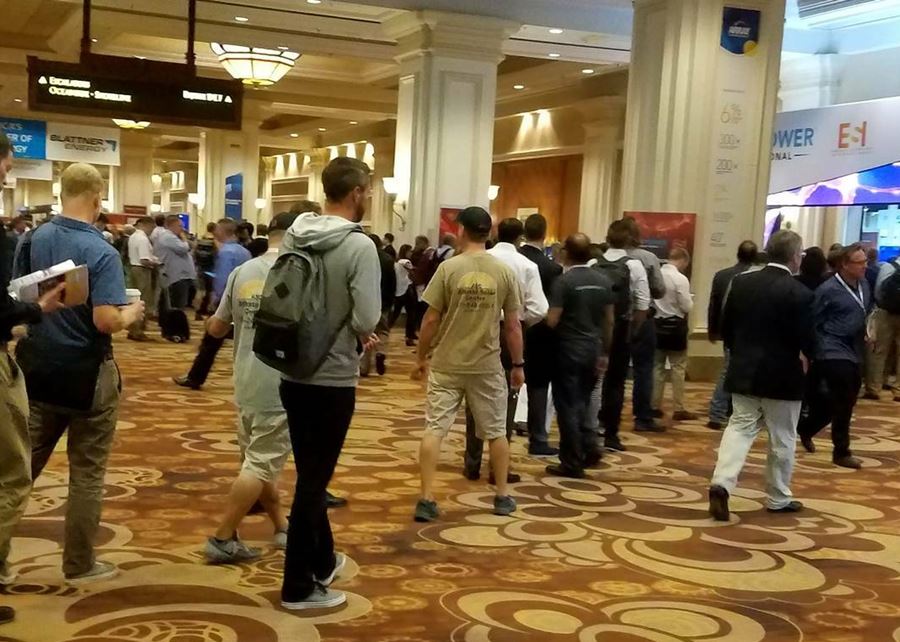By Frank Andorka, Senior Correspondent
What Happened: Since January 1, the Solar Energy Industries Association (SEIA) has made moves that indicate it is considering wooing utilities to become part of its membership – a move that may be well-intentioned but are far more likely to be self-defeating.
- SEIA President and CEO Abigail Ross Hopper told SolarWakeup last year that she was willing to talk to anyone (which apparently really does mean anyone) to expand the solar industry.
- In the past few months, SEIA floated the idea of bringing on utilities as members of the association to some board members.
- SEIA approached SEPA to acquire their ownership stake in the SPI production company, SETS, but instead renewed the joint venture .

SolarWakeup’s View: Sometimes, the enemies of your enemies are still your enemies, too.
While I have no doubt the intentions of Abigail Ross Hopper and the rest of the SEIA team are honorable, the idea of bringing utilities in as part of the national solar association makes me uneasy – and apparently I’m not the only one.
Since the beginning of the year, the subject of allowing utilities to become members of the association has come up. In one instance, the executive team met with resistance from the board when utility membership was discussed. Dan Whitten, the association’s vice president of communication, disputes that characterization of what happened at the meeting, though sources requesting to remain anonymous to discuss the plan freely outlined it as reported above.
“A range of options with regard to utilities was discussed at our most recent board meeting,” Whitten told SolarWakeup. “There was some pushback, and there was also interest in pursuing this further. The conversation is not over.”Likewise, recent negotiations surrounding the co-sponsorship of Solar Power International with the Smart Electric Power Alliance also came under discussion. Sources tell SolarWakeup that SEIA tried to buy out SEPA’s interest in the show but were rebuffed. An of the partnership was signed instead. SEPA, unlike SEIA, has investor-owned utilities on their board and takes in millions of profits from SPI and other shows produced by SETS (Solar Energy Trade Shows).
Whitten again disputes that characterization as well. “It was among a full range of options that we have batted around including renewal, the one we landed on,” he said.
An extension under the previous agreement should concern any SEIA member, however. After all, most of the revenues from the show come from SEIA members and members’ customers, but SEPA’s annual budget is more than 50% funded by the SETS joint venture. The bottom line? SEIA’s members – that’s you – fund an organization with close ties to the utilities that are trying to mess with your business. In other words, SEPA needs you more than the other way around, but it’s SEIA’s members that get hurt in the process.
“There is no question that we are looking at all opportunities to better represent the full solar industry from local installers, to providers of advanced technologies, to large-scale solar providers and sponsors,” Whitten said. “We want a big tent, but we want to do it in a way that will keep the solar industry together. A solar industry divided is an industry with limited to no political power. [We want solar to become] one that can represent the entire $20 billion and growing industry can wield serious influence in Washington and in states.”
Look, I get it. For years – nay, decades – the national association has struggled to find ways to raise the necessary money to battle against a well-funded utility industry, a battle it knows it needs to fight. And I understand the temptation to go where the money is. After all, there is no question the utilities are well funded and have money to burn – just look at EEI and NEI. Look at all the cash they’re spending trying to dismantle net metering – maybe the most effective pro-solar-penetration legislative policy in history – and the money they get from charging exhorbitant fees for interconnection access.
But that’s just it, isn’t it? Can we ever trust the utilities to support the solar industry fully, given the threat it poses to most utilities’ monopoly power on electricity generation? Wouldn’t we essentially just be giving cover to a group that, if they don’t want to destroy the solar industry entirely, at the very least want to slow it down long enough for utilities to figure out how to keep the power of solar for themselves? What would that mean to SEIA’s position on ratepayer-funded solar within utilities’ monopoly markets?
But I’m a big believer in playing out the potential unintended consequences of any move before deciding on a final course of action. And the potentially devastating consequences of alliance between solar’s national association and groups hellbent on hobbling solar’s growth are bridge too far for me.
They should be for you, too.
More:
The Solar Energy Industries Association
What Is The Threat To The Utilities From The Solar Industry?
Zombie Lie Returns; Time To Kill It Again
APS Is Trying To Kill Steyer-Backed RPS Initiative
South Carolina Solar Soul Under Attack
Hey, California Utility: John Grisham Would Like His Latest Plot Back
Bonus:
It just seemed appropriate.

